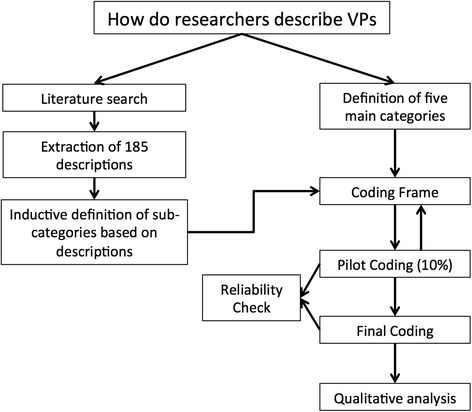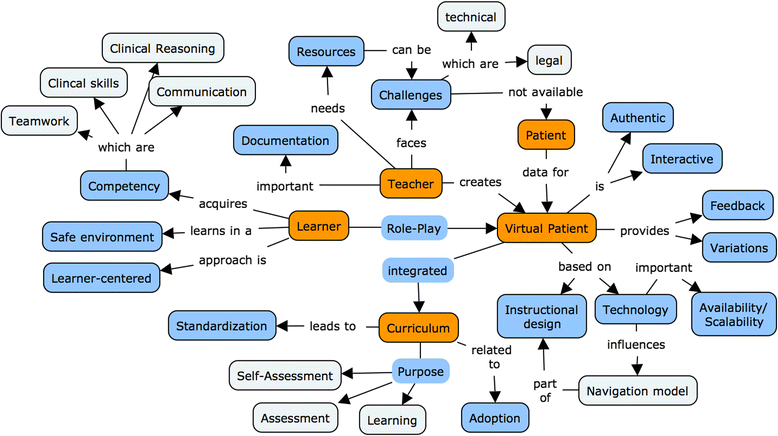A qualitative analysis of virtual patient descriptions in healthcare education based on a systematic literature review
- PMID: 27177766
- PMCID: PMC4865997
- DOI: 10.1186/s12909-016-0655-8
A qualitative analysis of virtual patient descriptions in healthcare education based on a systematic literature review
Abstract
Background: Virtual Patients (VPs) have been in the focus of research in healthcare education for many years. The aim of our study was to analyze how virtual patients are described in the healthcare education literature, and how the identified concepts relate to each other.
Methods: We performed a literature review and extracted 185 descriptions of virtual patients from the articles. In a qualitative content analysis approach we inductively-deductively developed categories and deducted subcategories. We constructed a concept map to illustrate these concepts and their interrelations.
Results: We developed the following five main categories: Patient, Teacher, Virtual Patient, Curriculum, and Learner. The concept map includes these categories and highlights aspects such as the under-valued role of patients in shaping their virtual representation and opposing concepts, such as standardization of learner activity versus learner-centeredness.
Conclusions: The presented concept map synthesizes VP descriptions and serves as a basis for both, VP use and discussions of research topics related to virtual patients.
Keywords: Concept mapping; Qualitative content analysis; Virtual patients.
Figures
References
-
- Effective Use of Educational Technology in Medical Education: Summary Report of the 2006 AAMC Colloquium on Educational Technology. Washington: Association of American Medical Colleges; 2007.
Publication types
MeSH terms
LinkOut - more resources
Full Text Sources
Other Literature Sources




